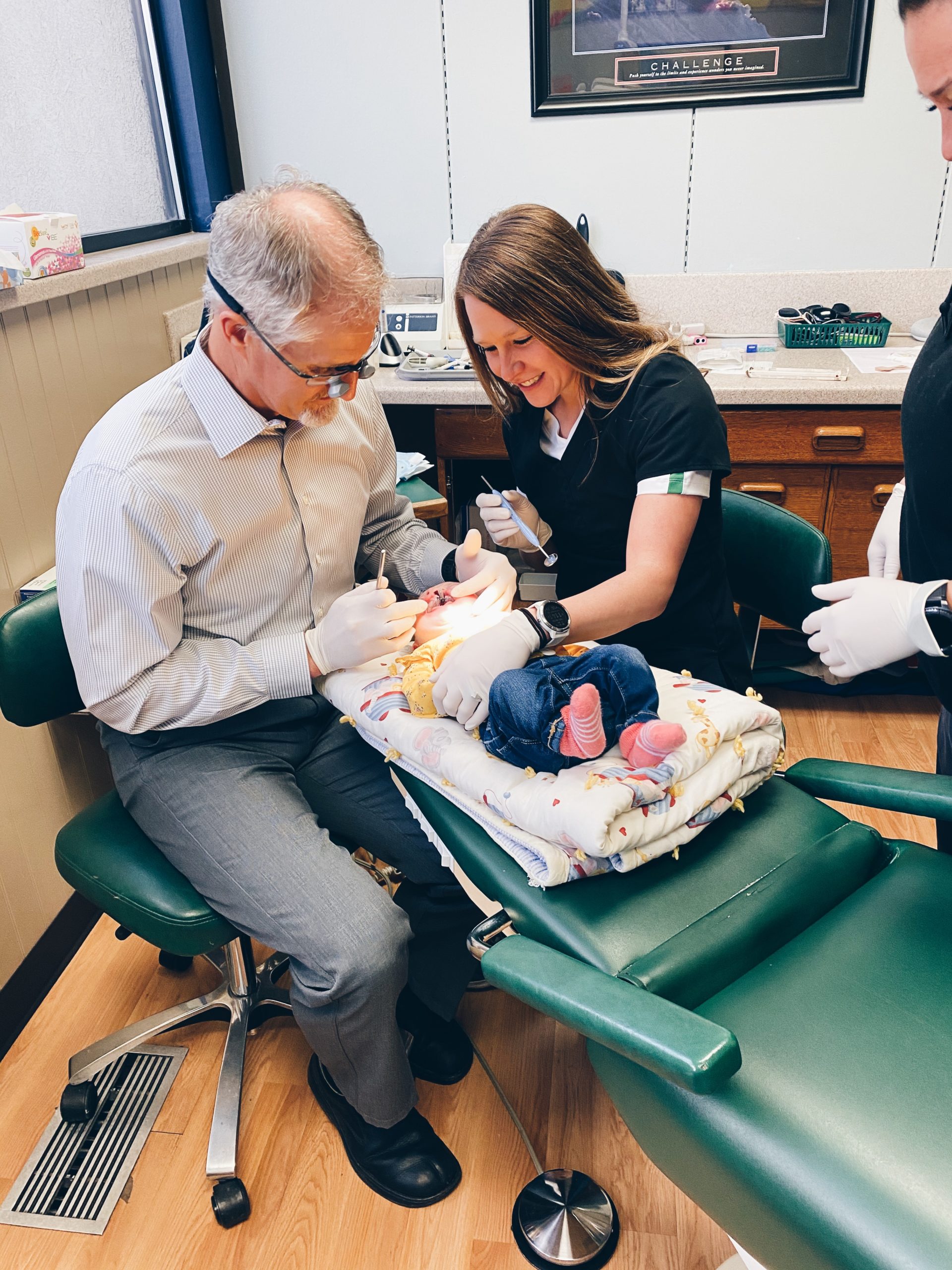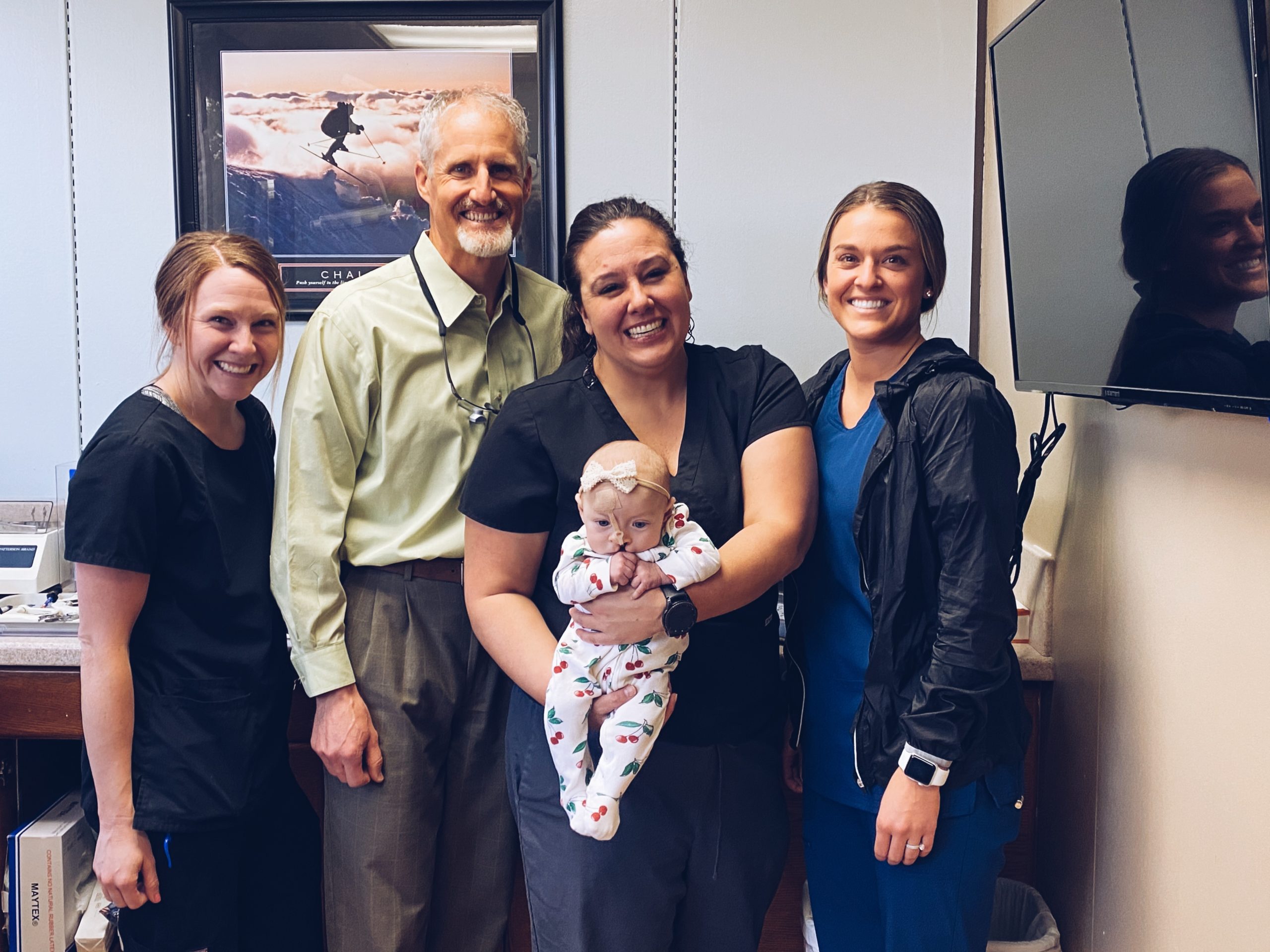Dental Expectations
What is Normal?
The only thing “normal” is dental issues in cleft kids are absolutely normal and should be expected. In fact 90% of cleft kids will have some form of dental anomaly. Most dental problems occur in the maxilla and are related to the location and severity of the cleft. The cleft will likely alter the developing tooth which may determine some of the possible problems or changes that might take place. Surprises do take place and we roll with it. The following are some of the anomalies that may occur:
-
- Multiple missing teeth (hypodontia, agenesis) — The cleft site has the highest likelihood of missing teeth. Think of a tooth like a seed, they both need a place to be planted.
- Ectopic location — It is very common for teeth to be misaligned, rotated, or come into a different location than expected.
- Impaction — The growth potential of some teeth, or the route in which they grow may lead to teeth not erupting into the mouth but growing deeper into the arch.
- Supernumerary or extra teeth — At times, early in the forming tooth, additional tooth buds form and grow into extra teeth, like twins, or triplets. Like weeds in the garden they may interfere with the growth of other teeth.
- Microdontia (mini-teeth) — Influence during the formation a of a tooth may cause the tooth to either be much smaller than normal or shaped differently. Some of these teeth are functional but others are not.
- Delayed Development — Normal eruption times and sequences may be considerably different from the averages.
- Transposition of Canines and Premolars — Near a cleft site, the canine can be pushed back and the premolar moved forward so they come into different spots than normal.
- Multiple Decayed Teeth — Malpositioned teeth make oral hygiene harder. Additonally, during development the mineral content may be diminished or altered causing the enamel crystal to be more porous and chalky. As a result, the tooth can lack the strength to withstand the usual abuses common to the mouth and can lead to decay and fractures.
- Crown and Root Malformations — Irregular shapes to the crown, angle, and lengths of roots can occur.


Teeth have critical functions such as speech, smiling, and chewing food. The aforementioned list of dental problems can occur in anyone and are not exclusive to those with clefts and craniofacial anomalies. While teeth may be too big or too small, too many or not enough, funny shaped or in the wrong place, we might not be able to control these wonky variables or how or where the teeth form. However, there are some things we can do to make a difference:
- Eat Healthy — A well balanced diet is important for all aspects of growth and development. The enemy to healthy teeth is the frequent consumption of anything with carbohydrates. Cavity bugs don’t care where their food comes from (a cow, an apple, Coke, candy, chips, or a mom’s breast), anything with carbohydrates can be broken down to form acids. Nursing or using a bottle throughout the night, carrying around a sippy cup with juice or pop, constantly snacking on crackers or cereal may cause a great risk for early childhood decay. Foods that are difficult to clean off of teeth or to clear from the mouth cause the biggest problems because they provide an all day buffet for “sugar bugs.” Sticky sweets or retentive foods like chips and crackers can remain on teeth for longer periods of time and can promote decay. Drinking water helps to dilute acids. Additionally, limiting snacks to certain established times and periods sets boundaries that promote better oral health.
-
- Establish good habits of oral care. Teeth are only one part of our mouth. Gums, tongues, hard and soft palates, lips, cheeks and bones are all in need of care. As we keep all the oral structures clean from plaque and disease the overall health of a person improves. Cleft kids have more oral issues and should be taught early to devote more time to the care and maintenance. Standard routines like brushing and flossing may be benefitted by the use of sonic or motorized toothbrushes. These toothbrushes can be very effective at getting into hard to reach places. Proper use of fluoride and fluoridated products can protect teeth that are already present and create stronger teeth that are forming.
-
- Have regular visits with your dental professionals. Seek care providers with additional education in pediatric dental problems as well as growth and development. When problems occur, and they will, a skilled pedatric dentist can be the link to restorative care and guide the path to a lifetime of better oral health. Cleft patients have additional needs. Well-timed and coordinated procedures will greatly influence the long term success of aesthetics, function, and speech.
Most importantly, don’t be overly worried about apparent dental problems. We live in a time when technology and advancements in restorative dentistry allow us to create very beautiful, healthy smiles. The process will take time and effort, but like all things of value, it will be worth it.
written by Dr. Trace Lund, team pedodontist



